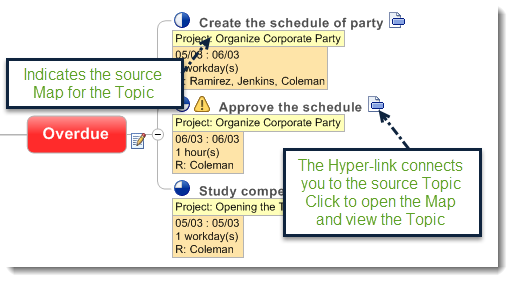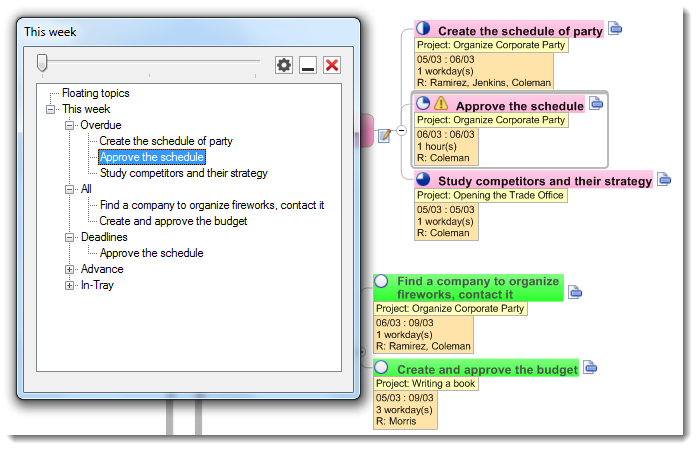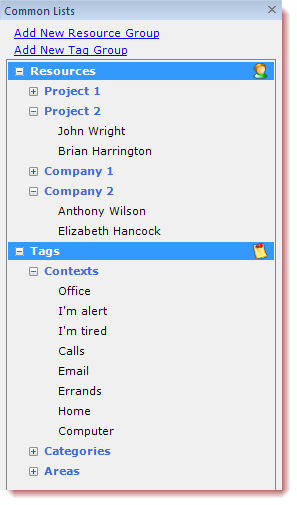Current Version: 2.3.1.2 (15th March 2015) is compatible with Mindjet 11, MindManager 14 & MindManager 15 (32.64 Bit)
MultiMaps is a great new MindManager add-in that helps you to access and edit information from any number of your maps quickly and easily. A collection of five core functions gives you the ability to build dashboards, manage resource and Tag lists, navigate large maps and more.
Product Description
MultiMaps for MindManager is a new add-in that helps you to collect, navigate, track, source and synchronize Map Topics and information when working with multiple Maps or multiple collections of Maps.
This new solution for improving the way you work with your MindManager Maps consists of 5 modules, each of which provides a specific set of features aimed at improving the way you can find, access and present information from your Maps. The modules are presented as Groups on the MultiMaps ribbon menu as shown below.

Data Collection
The Data Collection module enables you to create dynamic Map dashboards which can be generated either on the fly or from a predefined template configured to collect Map content based on specific criteria. Data can be collected from the current Map (and its linked Maps), a specified Map (and its linked Maps) or from a collection of Maps stored in a folder or from the MindManager My Maps collections.
Collect Map information from ANY number of Maps by ANY criteria.
The Data Collection feature enables you to create dynamic Map Dashboards containing Map Topics with defined attributes such as a Priority or a Progress Percentage etc.
You can create Templates that enable you to run collections multiple times collecting the same defined data or you can create a Map Dashboard “on the fly” using special keywords inserted into your current Map.
Collect data from Maps that:
- on your computer or
- on network drive or
- in your company’s server or
- in Mindjet Files.
Collect data by any criteria:
- by dates (tasks that are active Today, Tomorrow, Yesterday, This week, Next week, This month…
you can specify absolutely any period in 1-2 clicks!); - overdue tasks;
- topics with specified Icons, Resources, Tags (or tag groups), Task Progress or Task Priority, Task Effort;
- tasks that need to be split into sub-tasks;
- branches with given Parent Topic’s name (e.g., your In-trays from project maps);
- any combination of the above!
Collect Data using Templates or “on the fly”:
- predefined Data Collection Templates (you can easily modify them according to your needs);
- create your own Templates and save them for the future use;
- collect data “on-the fly”, without template;
- create mini-templates and save them in the Map Parts pane for the future use.
Specify any Data Collection sources:
- Central Map that holds links to maps used in data collection;
- Folder (and its sub-folders) that holds maps used in data collection;
- Map Collection in My Maps pane.
When the Dashboard is built you will see Topics that match the specified criteria for the collection. Each Topic in the Dashboard is marked with a Tag that contains the Map name and each Topic also contains a hyper-link which when clicked will open the source Map and jump to the designated Topic allowing you to quickly see the source Topic in its original context and with its surrounding Map content.

You can edit the Topics in your Dashboard and then, when needed, send your changes to the source Map(s) in 1 click!
The Data Collection engine is very powerful and has a bit of automation but it has been developed to be as easy to use as possible in its supplied state.
However, if you need more control or wish to fine tune your collections, you can learn the Data Collection Configuration map and its macro language to create your own filters to get maximum power and flexibility of the Data Collection engine.
In the MultiMaps documentation you can find many useful and practical tips on how to organize and take control of your projects with mind maps.
Tracking
The Tracking module enables you to use conditional formatting of Topic Fill Color to indicate a Topics status based on criteria such as Priority, Progress and/or date and is useful for highlighting Topics that need attention or have reached a certain state. This is similar to the conditional formatting that MindManager 15 offers with Topic Formulas but working with the more common Topic elements. Again, templates can be used to apply custom tracking criteria across Maps for different scenarios.
Flexible Conditional Formatting for Map Topics
Have you ever wanted to view tasks needing action today at the moment you open your Map? Perhaps you are planning the next week and want to have tasks highlighted that:
- start in the next week,
- are in progress and
- end in the next week?
Not filtered, not selected, but precisely highlighted in different colors without your interaction?
![]()
The MultiMaps Tracking module is designed the help you achieve these things and more. Just one click – and your map becomes alive, highlighting the Topics that need your attention helping you plan, review and monitor.
You can use predefined tracking templates, and you can create your own. You can specify highlight colors for different periods (Today, Tomorrow, etc.). When the Topic dates match a given period, the Topic will be highlighted with the specified color.
Highlighted topics can also propagate their color to Parent Topics, up to their Main Topic. So even in a collapsed map, you can see if a Main Topic suddenly became Red – that means there is something that needs your attention.
Keeping track of what each color represents is easy to as when Topics become highlighted, the definition for its color appears in Map Index pane:
![]()
You can learn more about this flexible and powerful module in the MultiMaps Help.
Map Navigator
The Map Navigator module provides two pieces of functionality to help you find and navigate to Map Topics and is particularly useful when working with large Maps.
Quick & Effective Navigation for Large Maps
The Map Navigator module consists of two independent functions.
Map Content
This is a very simple but useful function. As your map grows, it becomes harder to browse through it – you have many Topics extended and the Map may start to become difficult to manipulate and you have no readable complete view of the Map. You are constantly scrolling the map to reach the required Topic, or collapse branches to get a clearer view of the Map.
The Map Content feature does very simple thing – it shows the list of topics in a separate window in a tree format, allowing you to collapse/expand levels in that tree. The map itself remains in the current state and does not change unless you click a Topic in the Map Content window, the clicked Topic in the Map then becomes visible and selected.

The Map Content window is dynamic. Once you change a Topic in the Map, it is immediately reflected in the Map Contentwindow. If you modify a Topic in the Map Content window it will be immediately updated in the Map.
If you switch to another Map (without closing the Map Content window), the Map Content window will be refreshed to show the content of the newly selected Map.
Bookmarks
MultiMaps Bookmarks operate exactly the same as bookmarks in your favorite Web Browser, bookmarks in Word or Notepad and in any other program.
MindManager has a simple Bookmark function called Labels but they only work in the current Map.

MultiMaps Bookmarks enables you to bookmark Topics in Maps in the same way as the Labels function does, however, MultiMaps Bookmarks can be accessed even if the map is not open. MultiMaps has its own Bookmarks database that stores bookmarks from different Maps.
Just as you can in your Web Browser, you can organize Bookmarks into Folders. For example, a “Reports” folder can store bookmarks for Reports Topics from different project Maps. You don’t need to remember where this report is, and how to navigate to it through a Map.
There is also a special bookmark group named Favorites. You can store the most often used bookmarks there. Just imagine how quickly you can now access your most required Topics!
Common Lists
In MindManager, Resources and Tags can reside in the Map itself and in the Template Organizer – Marker Lists. This it is not very manageable if you have many Resources and Tags, and they cannot be organized/sorted at all. Using the Common Lists module, you can organize your Resources by any criteria, such as Resources for Project 1, Project 2 etc., Resources for Company 1, Company 2 etc. Similarly you can do the same for Tags – organize them into groups suitable for you.
Do you utilize a large number of Resources across multiple projects, several companies, departments, etc?
The Common Lists module of MultiMaps for MindManager helps organize your Resources in an easy and convenient way, so they are always within a few clicks of your mouse. You can assign them to specific Map Topics, or copy the complete group to your Map.
 Common Lists offers the same functionality for Tags. Organize your Tags: Contacts, Categories, Stages etc so they are always at hand and reduce the amount of times you need to copy them from one map to another!
Common Lists offers the same functionality for Tags. Organize your Tags: Contacts, Categories, Stages etc so they are always at hand and reduce the amount of times you need to copy them from one map to another!
MindManager stores Resources and Tags in your Map. These Resources and Tags can be added to and extended and then saved as a Map Template or as a Marker List in the Template Organizer, but it is not very easy to manage them if you have a large amount and they cannot be organized/sorted.
The Common Lists module enables you to organize your Resources by any criteria such as Resources for Project 1, Project 2 etc., Resources for Company 1, Company 2 etc. You can also do the same with Tags – organize them into groups suitable for your needs.
Common Lists are utilized the same way as the Index task pane, so you are already familiar with how to work with them. When needed, you can easily find your required Resource or Tag, and assign it to the Topic.
You can fill Resource and Tag groups manually or you can import Resources and Tags from different sources – from another Map, from an Excel book or even from a plain text file.
If you need or want to add the whole Resource or Tag group into your map – you can do so with just 2 clicks.
Synchronization
The Synchronization module allows you to synchronize Topics (and their Sub-Topics, i.e., their branches) in the same Map or in different Maps. You can even synchronize Topics in Maps that are stored on different devices or in Cloud storage. This is an extremely useful feature for collaboration and remote work. Synchronization works both in automatic and manual mode and can be setup either one-way or bi-directional.
Keep Map Topics in Sync Between Maps
 The MultiMaps Synchronization module allows you to synchronize Topics (with their Sub-Topics) in the same Map, or other Maps.
The MultiMaps Synchronization module allows you to synchronize Topics (with their Sub-Topics) in the same Map, or other Maps.
If you are synchronizing two Topics and then change something in one of those Topics, or in any of its Sub-Topics, or you add or delete an attribute, it will be reflected in the other branch automatically.
There are many applications where Topic Synchronization can be useful especially when you are working with teams. Here are a few examples:
- Your Map contains the description of a process (business, technology, procedures or instructions, etc.). Some of the processes or their parts contain exactly the same steps as the others. Or perhaps this process is duplicated in the other Map. If it changes it is necessary to make the same changes in the duplicated process. Setting up synchronization between the relevant branches will let MultiMaps manage this for you. As you change something in one process, the changes will be immediately reflected in other.
- In your Central Map, you want to see the overall outcomes from different project Maps. To do this, create a Topic namedReport, and add Sub-Topics, one to represent each project. Then synchronize these Sub-Topics with required (summary) topics from your project Maps. Now the “Report” branch will reflect the most up to date data from the required summary Topics. Automatically.
- You are a Project Manager and need to assign tasks to certain employees. You make a Map, each branch of which is the tasks for an employee. Then you synchronize these branches with branches of the employees’ Maps. Now just add tasks to your map, and they will be shown in employee’s map. You can use this in reverse to receive their reports, as the synchronization is two-way. As soon as the employee updates their activity in their map, you immediately see the changes.
You can synchronize Topics in Maps stored on different devices, on network disks (in your corporate network, for example) and even in Mindjet Cloud (Mindjet Files).
In addition to this:
- sync can be Automatic as well as Manual. You don’t need to worry that you may forget to synchronize something. As you set the synchronization up, it can automatically send and receive updates. Automatic synchronization can be turned off either globally or just for each particular topic.
- sync can be either two-way or one-way. In most cases, you will want to use two-way synchronization, but this is not always the case.
